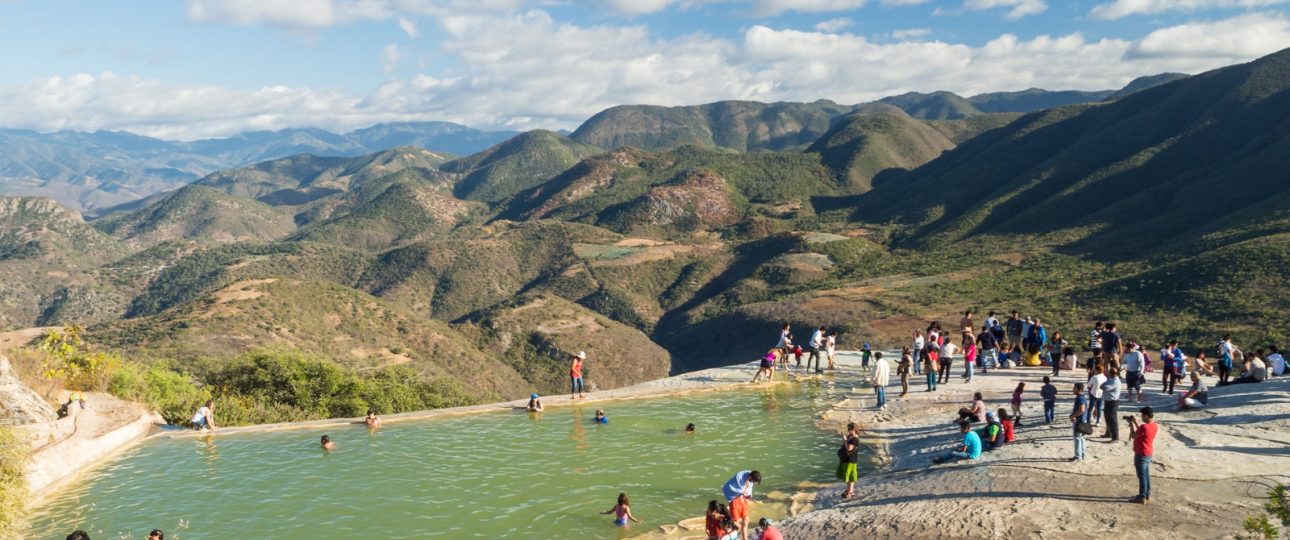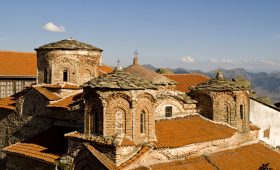Exploring Hierve el Agua: A Unique Natural Formation in Mexico
Hierve el Agua, meaning “the water boils” in Spanish, is a captivating natural site in southern Mexico. Known for its striking rock formations that resemble cascading waterfalls, this destination offers a blend of geological wonder and cultural history. Let’s delve into what makes Hierve el Agua a fascinating place to visit.
The Geological Marvel of Hierve el Agua
Hierve el Agua is renowned for its petrified waterfalls, created by mineral-rich spring water flowing over the cliffs for thousands of years. These formations are among the few calcified waterfalls in the world. The minerals in the water have left colorful deposits, painting the rocks in shades of turquoise, orange, and red. This natural canvas is a delight for photographers and nature enthusiasts alike.
Getting There: Travel Options
Reaching Hierve el Agua involves a scenic journey from Oaxaca. You can drive or use public transport. By car, head towards Mitla on road 190, then follow signs to the toll road 179. Alternatively, take a longer route through San Pablo Villa de Mitla, which involves a dirt road and a small access fee. For those with a 4WD vehicle, a shorter toll-free route is available via Xaagá.
Public transport is another option. From Oaxaca, take a bus or colectivo from the main road near Estadio Eduardo Vasconcelos. In Mitla, transfer to another colectivo heading to Hierve el Agua. Be prepared for a bumpy ride, especially if seated at the back of the pickup. The cost varies based on the number of passengers.
Exploring Hierve el Agua: Practical Tips
Once at Hierve el Agua, walking is the best way to explore. The paths are straightforward but involve steps and uneven terrain. Here are some tips to enhance your visit:
- Wear sturdy shoes: The terrain can be rocky and uneven, so comfortable footwear is essential.
- Stay hydrated: Bring water, especially if visiting during warmer months.
- Check site status: Due to land disputes, the site may close unexpectedly. Verify its status with local sources before your trip.
- Consider timing: Visit early or late in the day to avoid crowds and enjoy cooler temperatures.
- Swimming: While some visitors swim in the pools, note that signs indicate swimming may not be permitted.
Cultural and Historical Context
Beyond its natural beauty, Hierve el Agua is steeped in cultural history. The ancient Zapotec civilization once inhabited this region, and their influence is evident in the nearby archaeological site of Mitla. Here, you can explore intricate stone carvings and mosaics that showcase the Zapotecs’ architectural prowess.
The area is also known for mezcal production. Consider visiting a local mezcal factory to learn about the traditional distillation process and sample this iconic Mexican spirit.
Best Time to Visit Hierve el Agua
Your visit to Hierve el Agua can be rewarding year-round, but consider these factors when planning:
- Weather: The dry season (November to April) offers pleasant temperatures and clear skies. The rainy season (May to October) brings lush landscapes but occasional showers.
- Crowds: Weekdays and shoulder seasons are less crowded. Avoid weekends and holidays for a more tranquil experience.
- Photography: Capture the vibrant colors during the golden hours of sunrise and sunset for the best lighting conditions.
Hierve el Agua is a destination that combines natural wonder with cultural depth. Whether you’re drawn by its geological formations or its historical significance, this site offers a unique experience in the heart of Mexico.




